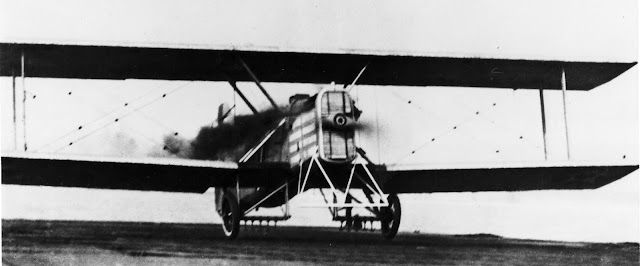The Douglas DT-2 was one of the U.S. Navy's first torpedo bombers. It was operated as both a seaplane and from Langley as shown here.
It was based on the Douglas World Cruiser, which the Army flew around the world in 1924. The major external changes were:
- Cut-down upper aft fuselage
- Rear cockpit moved aft
- Front cockpit opening larger and squared off
- New nose, vertical fin and rudder
- Recess in the bottom of the fuselage for mounting the torpedo
- No dihedral in the upper wing or center section cutout (there was also a fairing on the right hand inboard upper surface)
- Added cutout in the lower inboard wing to allow access to the cockpit when the floats were installed
- The horizontal tail was moved forward and enlarged accordingly
- Tailhook
- Initially, a propeller guard and hooks on the landing gear spreader bars to engage the longitudinal wires on the early arresting system
This is a pretty good drawing that I did back then from Douglas drawings provided to me by Harry Gann. Unfortunately, the tailhook is speculative. (Click on it for a larger and downloadable view.)
The torpedo was probably the Mk 7, which was 17 feet long and 18 inches in diameter:




Nice! I want to modify Williams Brothers' 1/72 DWC into a DT-2 so this was very helpful. Can you give answer to or recommend sources to clearify the following issues:
ReplyDelete- Details on the size and look of the recess for the torpedo.
- Same for the torpedo brackets, or what to call where the torpedoes are hanging.
- What is the purpose of the thing low on the forward fuselage, behind the propellor? The thing that looks like a V attached to fuselage. Is it for preventing the torpedo to hit fuselage after release?
- Are there any sources for pictures of the cockpit interior?
Very nice drawings, thanks alot for posting this!
Unfortunately, I don't have any more detail except for a better image of the torpedo that I just added. The structure just behind the prop was a propeller guard. One of the drawbacks of the original arrangement of longitudinal cables and hooks on the landing gear spreader bar appears to have been the tendency of the hooks to snag and cause the airplane to pitch forward, breaking the propeller and possibly causing sudden-stoppage damage to the engine.
ReplyDelete